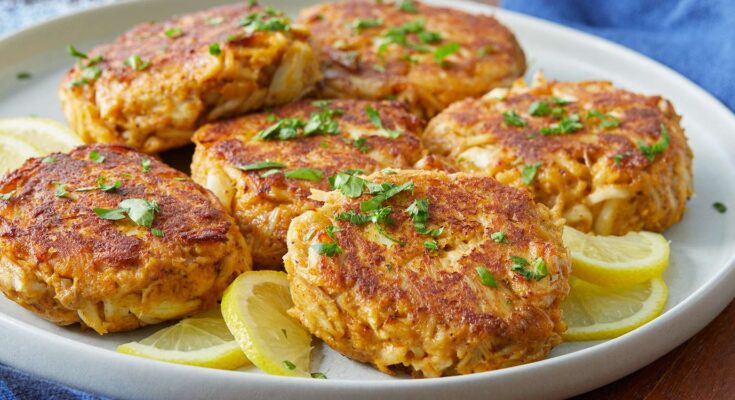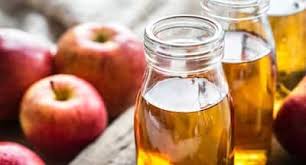Maryland Crab Cakes Recipe: There’s something magical about biting into a golden-brown Maryland crab cake. If you’ve ever visited Maryland or even heard about their culinary fame, you know crab cakes sit high on the throne of iconic American foods. They’re loaded with sweet, succulent crab meat, delicately seasoned, and usually cooked to crispy perfection.
A Brief History
The roots of Maryland crab cakes run deep, tracing back to Native American seafood preparations along the Chesapeake Bay. Over centuries, the technique evolved with European influences. What we now call a Maryland crab cake—a lightly seasoned patty highlighting the natural flavor of crab—was once simply a necessity for coastal communities, making the most of the abundant blue crab.
Why They’re So Popular
What sets Maryland crab cakes apart? It’s the emphasis on minimal filler. Unlike other versions overloaded with breadcrumbs, the Maryland style celebrates the purity of the crab. The balance of sweet crab meat with just enough binder and spice makes every bite a symphony of flavor and texture.
Ingredients You’ll Need
Getting the ingredients right is the first step toward making authentic Maryland crab cakes. Simplicity is key—you want the crab to shine, not be buried under a mountain of seasoning or bread.
Key Ingredients for Authentic Flavor
Here’s what you’ll absolutely need:
- Lump Crab Meat: Fresh is best, but pasteurized crab meat works too if necessary.
- Mayonnaise: Helps to keep the cakes moist.
- Dijon Mustard: Adds a slight tang.
- Old Bay Seasoning: No Maryland crab cake is complete without it.
- Egg: Binds everything together.
- Worcestershire Sauce: Deepens the flavor.
- Lemon Juice: Brightens everything up.
- Fresh Parsley: For a burst of color and fresh herbal notes.
- Breadcrumbs: Very little—just enough to hold it all together.
Optional Add-ins
Want to personalize your cakes a bit? Some chefs like to sneak in:
- Finely diced celery or red peppers for crunch
- Hot sauce for a little kick
- Chives or green onions for extra flavor
Keep in mind, though: less is more. You want those juicy crab chunks to be the stars of the show.
Choosing the Best Crab Meat
Good crab cakes start with good crab. But walking into the seafood section can feel overwhelming if you’re not sure what to look for.
Types of Crab Meat
Here’s a quick breakdown:
- Jumbo Lump: Large, whole pieces from the crab’s swimming legs—expensive but oh-so-worth it.
- Lump: Smaller broken pieces, still sweet and tender.
- Backfin: A mix of lump and smaller pieces—perfect for budget-friendly crab cakes.
- Claw Meat: Darker, more flavorful meat; great for a more robust flavor but less traditional.
Where to Buy Fresh Crab Meat
Look for seafood markets, reputable grocery stores, or even online delivery services that specialize in seafood. Make sure the meat smells fresh—never fishy—and is kept refrigerated at all times.
Step-by-Step Preparation Guide
Ready to dive in? Let’s walk through the process of making Maryland crab cakes from scratch. It’s easier than you might think!
Preparing the Ingredients
First things first: gather all your ingredients in one place. Carefully pick through the crab meat for shells but be gentle—you don’t want to shred those beautiful lumps.
Mixing the Crab Cake Mixture
In a large bowl, whisk together:
- 1/2 cup mayonnaise
- 1 tablespoon Dijon mustard
- 1 teaspoon Worcestershire sauce
- 1 tablespoon lemon juice
- 1 teaspoon Old Bay seasoning
- 1 large egg, beaten
- 2 tablespoons chopped fresh parsley
Once the wet ingredients are combined, gently fold in the crab meat and 1/2 cup of breadcrumbs. Use your hands or a spatula, being careful not to break up the meat too much.
Shaping the Crab Cakes
Form the mixture into cakes about 3 inches wide and 1 inch thick. Place them on a baking sheet lined with parchment paper. If the mixture feels too loose, pop it into the fridge for about 30 minutes—it firms up beautifully.
Cooking Methods: Baking vs. Frying
You’ve got two classic ways to cook your crab cakes:
- Baking: Preheat the oven to 425°F (218°C). Bake for 12–15 minutes until golden brown.
- Pan-Frying: Heat a thin layer of oil over medium-high heat. Cook the cakes for 3–4 minutes per side until crispy and deeply golden.
Baking is easier for larger batches, but pan-frying gives you that irresistible crust.
Tips for Perfect Maryland Crab Cakes
Making crab cakes isn’t rocket science, but a few smart tricks can help you get that restaurant-quality result every time.
Dos and Don’ts
Do:
- Handle the crab meat gently. You want nice chunks in every bite, not a mushy mess.
- Chill the mixture. If time allows, chilling for 30 minutes to an hour before cooking will firm up the cakes, making them less likely to fall apart.
- Use minimal filler. Breadcrumbs are necessary, but only just enough to hold everything together.
- Taste the mixture. Before forming all your cakes, fry a tiny bit of the mixture and taste it to adjust seasoning.
Don’t:
- Overmix. Less is more when blending your ingredients.
- Skimp on crab quality. The flavor of the final product depends largely on the crab meat you start with.
- Overcook. Keep a close eye on them—overcooked crab cakes can become dry and tough.
Remember, a Maryland crab cake should be about 90% crab meat and 10% everything else.
Serving Suggestions
What’s the best way to enjoy these beauties once they’re hot and ready? Let’s talk sides and sauces that will complement your Maryland crab cakes perfectly.
Best Side Dishes
- Coleslaw: Creamy, tangy slaw adds crunch and balance.
- French Fries: A crispy, salty match made in heaven.
- Corn on the Cob: Sweet corn pairs naturally with seafood.
- Simple Salad: A light, refreshing side with a lemon vinaigrette.
- Hush Puppies: These little fried cornmeal balls are a Southern seafood staple.
If you’re looking for something fancier, a bed of mixed greens with a drizzle of lemon dressing can turn your crab cakes into a gourmet meal.
Perfect Sauces for Dipping
A great crab cake deserves an equally great sauce:
- Tartar Sauce: Classic and reliable.
- Remoulade: A spicy Cajun-inspired mayo-based sauce.
- Aioli: Garlic aioli adds a rich, savory punch.
- Cocktail Sauce: Zesty and bright, perfect if you like a bit of a kick.
Mix and match to find your favorite, or simply squeeze a bit of fresh lemon juice on top and dig in.
How to Store and Reheat Leftovers
Made a few too many? No worries! Proper storage and reheating ensure your crab cakes stay just as delightful the next day.
- Storing: Place cooled crab cakes in an airtight container and refrigerate. They’ll last about 2–3 days.
- Freezing: You can also freeze uncooked crab cakes. Place them on a baking sheet, freeze until solid, then transfer to a zip-top bag for up to 3 months.
- Reheating: For best results, bake leftover crab cakes in a 375°F (190°C) oven for about 10–12 minutes. Avoid microwaving—they’ll get rubbery.
Nothing beats a fresh crab cake, but if handled properly, leftovers can still bring back that crispy-on-the-outside, tender-on-the-inside magic.
FAQs about Maryland Crab Cakes Recipe
What makes Maryland crab cakes different?
Maryland crab cakes are famous for their high-quality lump crab meat, minimal filler, and bold seasoning. They let the sweet, delicate flavor of blue crab shine through without overpowering it with too many breadcrumbs or sauces.
Can I use canned crab meat for Maryland crab cakes?
Yes, you can! While fresh lump crab meat is ideal for authentic taste and texture, good-quality canned crab meat is a convenient and affordable alternative. Just be sure to drain it well before using.
What is the best binder for crab cakes?
Mayonnaise and a light touch of breadcrumbs are the traditional binders for Maryland crab cakes. They help hold the cakes together without making them dense or heavy.
How do I prevent crab cakes from falling apart?
Handle them gently and refrigerate the formed cakes for at least 30 minutes before cooking. Chilling helps them firm up and stay intact while frying or baking.
Is it better to bake or fry crab cakes?
Both methods work! Frying gives crab cakes a crispy golden crust, while baking is a healthier option that still delivers plenty of flavor. Choose based on your preference.
Can I freeze Maryland crab cakes?
Absolutely. Freeze uncooked crab cakes on a tray first, then transfer them to an airtight container or freezer bag. They can last up to 3 months and be cooked straight from frozen.
Conclusion
Making authentic Maryland crab cakes at home is easier than you might think—and totally worth the effort. With fresh, high-quality crab meat, minimal fillers, and just the right seasoning, you can create a dish that rivals the best seafood spots in Maryland. Whether you’re serving them for a special dinner, a weekend treat, or a backyard party, these crab cakes are guaranteed to impress.
Don’t be afraid to experiment a little with sides and sauces until you find your perfect match. And remember: the key is to let the sweet, succulent crab shine. Happy cooking!



